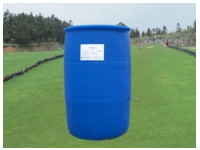Surfactants are one of the main components of detergent detergents. Except for special purposes, these products are discharged into the environment directly or after being treated by sewage treatment plants. However, anionic surfactants, which are difficult to biodegrade, play an important role in detergents. The discharge of surfactant containing wastewater not only directly harms the aquatic environment, kills microorganisms in the environment, inhibits the degradation of other toxic substances, but also leads to the reduction of dissolved oxygen in water, especially the nitrogen and phosphorus containing surfactants will cause eutrophication of water. When the concentration of surfactant in wastewater reaches a certain concentration, it will affect many processes such as aeration, sedimentation, sludge nitrification, etc.

Paper is an important packaging material. With the increasing demand of paper and paperboard, the shortage of raw materials and energy is bound to aggravate. Due to the limited forest resources and the shortage of water resources in our country, it can not meet the needs of the paper industry. Therefore, in the era of advocating ecological civilization and circular economy, the recycling of waste paper and paper products is very important.
Worldwide, 54% of waste paper is used as cardboard, 15% as wrapping paper, 12% as newsprint, 10% as toilet paper and 7% as printing and writing paper. Waste paper papermaking can eliminate the complex wood raw material preparation, cooking, bleaching and other processes. The key of waste paper utilization is deinking technology. Surfactant is the main active component of waste paper deinking. In this paper, the properties of different surfactants are compared and applied to the chemical washing deinking of waste newsprint, and the appropriate process is discussed.
Due to the amphoteric molecular structure of hydrophilic and lipophilic, biosurfactants and chemical surfactants have similar properties, such as foaming, defoaming, emulsification, demulsification, dispersion, flocculation, wetting, spreading, penetration, lubrication, antistatic and sterilization.
With the increasingly prominent environmental problems of chemical surfactants, the application of biosurfactants has attracted more and more attention. In the late 1980s, the development of biosurfactants by bioengineering technology has become a new topic in the field of international bioengineering. In the past 20 years, with the rapid development of modern biotechnology and the application of biosurfactants in oil exploitation, environmental protection, pharmaceutical, food processing and other aspects, people have a strong interest in the use of this technology in the industrial field. The enhancement of global environmental awareness has promoted the trend of biosurfactants replacing chemical surfactants.